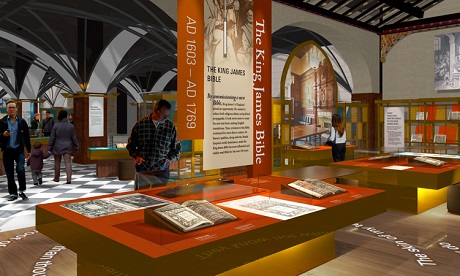A non-sectarian Museum of the Bible opened in Washington on Saturday.
The US$500 million museum’s aim is to entertain and educate visitors about the Bible’s history and significance.
Cardinal Donald Wuerl, the Israeli Ambassador to the United States and the museum’s co-founder, evangelical businessman Steve Green, were at the opening.
Wuerl spoke on behalf of Pope Francis.
Through Wuerl, Francis sent his “fervent hope that … through its extensive collections and exhibits [the museum] will promote a better understanding … of the rich and complex history of the biblical text”.
He hoped the “enduring power of the museum’s message” would “inspire and shape the lives of individuals and peoples of every time and place.”
Francis also said he hoped that through engaging with scholars of various traditions the museum would help advance inter-religious understanding and cooperation.
Israel’s Prime Minister Benjamin Netanyahu also sent a message.
He said “the Jewish people are known as the people of the book because of the centrality of the Hebrew Bible in our faith, our history, and our lives.
“Our roots in the land of Israel as described in the holy scriptures stretch back nearly 4,000 years, but it was only 70 years ago after millennia of exile that we were finally able to reconstitute our nation and home at the Holy land…”
“…By featuring Jewish, Protestant, Catholic and other faith traditions, the museum highlights our shared values and beliefs as well as the history and development of the Judeo-Christian culture over the centuries.”
The Israeli Association for Antiquities sent a number of artifacts including a large stone from the Western Wall in Jerusalem.
Visitors are encouraged to touch the stone.
A whole floor includes an interactive exhibit featuring “The World of Jesus of Nazareth”.
It includes replicas of homes and what food in Nazareth might have looked like in the time of Jesus.
Although the museum is supposed to be non-sectarian, there are few Arabic script exhibits apart from temporary items on loan from Jerusalem.
One of the permanent features in Arabic is a translation of a psalm engraved on a window.
It is set alongside 15 other panels in various languages in the entrance’s main atrium.
There are also a couple of texts in Judeo-Arabic, varieties of Arabic spoken by Jews and written in the Hebrew script.
Arabic’s absence elsewhere – including the 10-language digital guide – has raised questions about the museum’s goals and target audience.
Source
Additional readingNews category: World.




